The forearm anatomy consists of countless small and weak muscles, virtually all of which are involved in the sport of tennis. As such, if you use poor technique, grip your racket too tightly, or don’t strengthen your lower arms during your workout regime, then you can experience forearm pain from tennis.
While most players dread taking time off the court, resting up is often the best and fastest way to recover and come back stronger.
Still, it’s helpful to learn about the potential causes and treatment options so that you can try to prevent the discomfort from arising in the future.
Related post: forearm exercises for tennis
What causes forearm pain from tennis?
Tennis-related forearm pain is annoying because it can keep you off the court for a while if it’s not treated properly. Therefore, it’s always best to talk to your doctor and discuss your symptoms. And below, you’ll find some common causes of that discomfort.
Tennis elbow
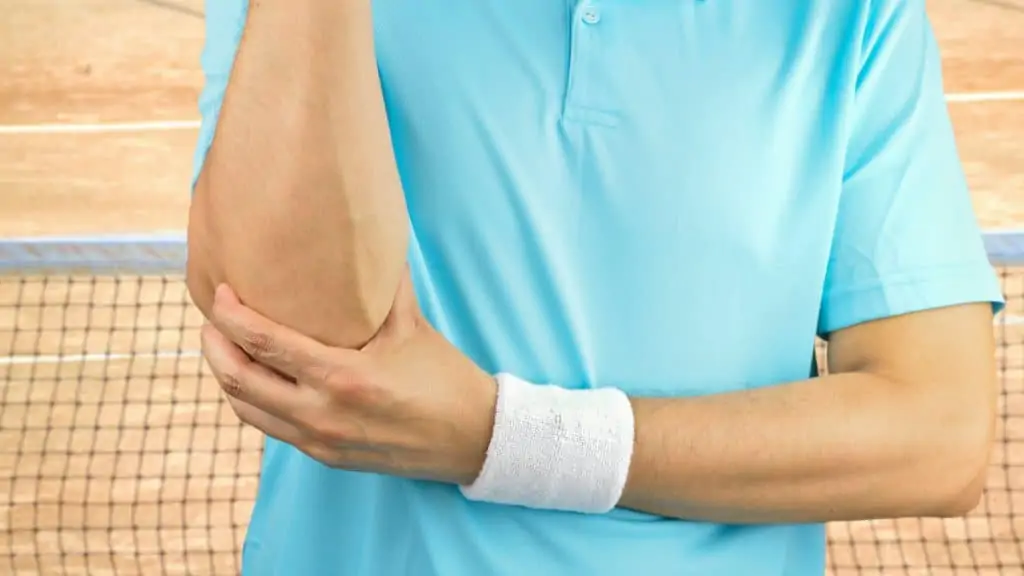
Tennis elbow, or lateral epicondylitis, is often felt on the outside of the elbow. [1] It’s a prime cause of injury in tennis players, both amateur and professional.
However, in some cases, you may also experience pain in your forearm and hand. In tennis players, the condition can arise from gripping your racket too tightly or from repetitive, aggressive swinging motions.
Insufficient recovery
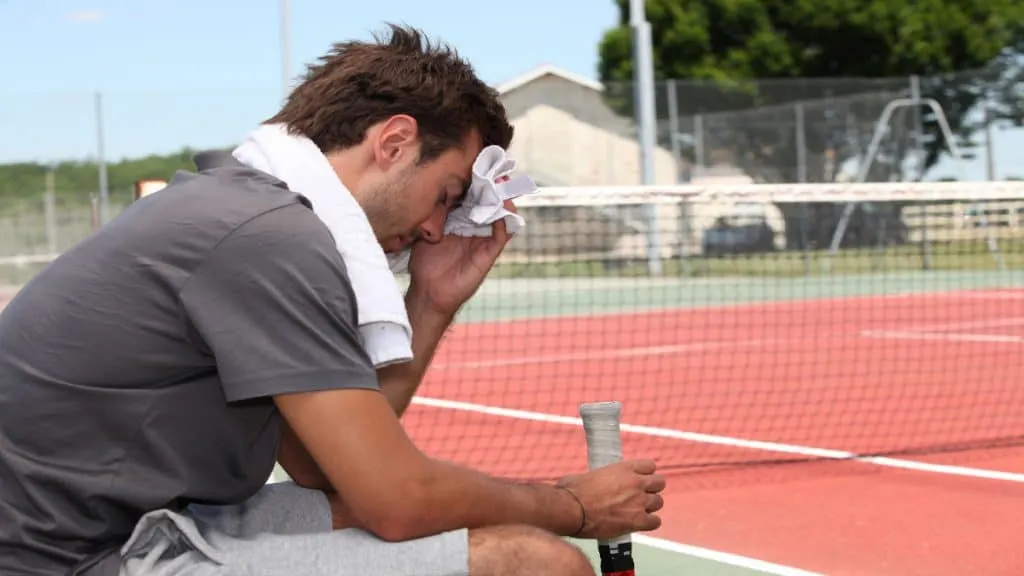
The forearms are highly active during tennis. And that means that they need sufficient time to recover from matches and training. So if you’re forcing your fatigued forearms to constantly grip your racket, then you might be subjecting them to more stress than they can handle.
Also, be sure that you’re not doing too much arm work in the gym. A little goes a long way when it comes to strength training. While you do need some arm muscle for a powerful swing, you certainly don’t need to look like a pumped-up weight lifter.
Muscle strain
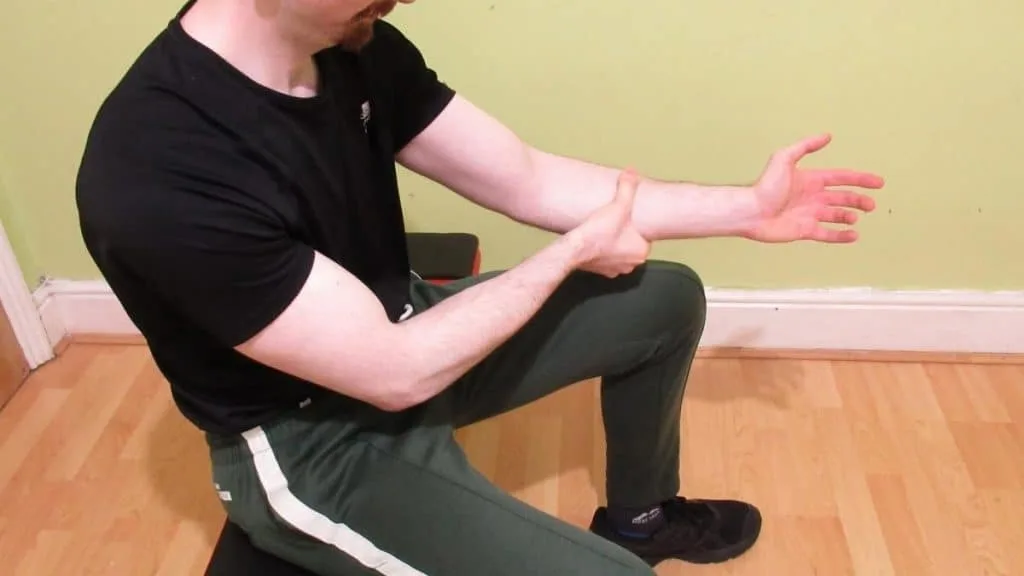
Muscle strain and injury is the logical and common outcome of poor fatigue management. If you’re constantly subjecting your forearms to stress for hours on end without enough rest, then your flexors and extensors can become strained.
Muscle strains, however, shouldn’t be confused with muscle soreness, which often occurs in the days following physical exertion—particularly from resistance training. Muscle soreness also disappears after a few days (or sometimes after a week, if you haven’t worked your muscles with weights for a while).
So if your tennis-related forearm pain persists after a week, then it’s likely that you have a muscle strain or something more serious than simple muscular soreness. [2]
Lack of arm strength

Hitting game–winning forehands requires more arm strength than many amateur tennis players think. While power most certainly does come with technique, having strong biceps, triceps, and forearms can help you to get more power on your shots so that you can work your opponents harder.
On the other hand, if you currently lack this arm strength, then you might experience forearm pain because your lower arms muscles just aren’t trained enough to handle the tension—yet.
Poor swing technique

We all have to start somewhere, but watching a beginner play tennis is often like watching someone ice skate for the first time; their performance is sloppy, and it looks like they’re about to get injured.
Certain swing techniques, like the Western forehand that some pros use, can put more stress on the elbow and forearm muscles than other swings. So it’s best to ask your coach or someone more experienced than you if your technique could use some work.
Of course, the right swing depends on many factors, such as your biomechanics and individual preferences. But it never hurts to ask for feedback on your form.
How can you treat forearm pain from tennis?
If you have forearm pain from tennis, it can take anywhere from a week to a few months for you to get back in action. But if you have a particularly serious bout of something like tennis elbow, then full recovery can sometimes take over a year.
RICE
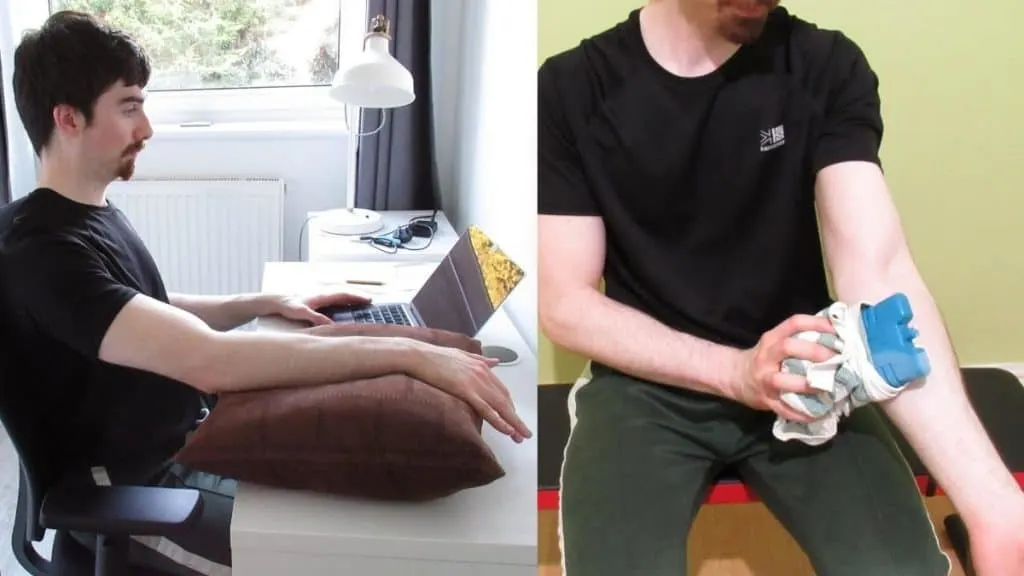
Resting the affected area is the obvious starting point. However, since so many eager athletes forget about rest, it bears repeating. Plus, a lack of rest could be responsible for some people’s tennis-related forearm pain in the first place.
You can ice the affected area to reduce any swelling and manage the pain. Ice the painful part of your forearm for 15 minutes every couple of hours for the first few days after the injury.
You can also wrap a small medical bandage around your lower arm. This increases blood flow and helps to heal damaged connective tissue. Just make sure to wrap the bandage lightly. You don’t want to make things worse by cutting off the blood flow to your forearm.
Finally, elevating your arm above your heart while you’re seated can also reduce the pain, and it’s quite easy to do if you have an adjustable chair at work.
Stretching
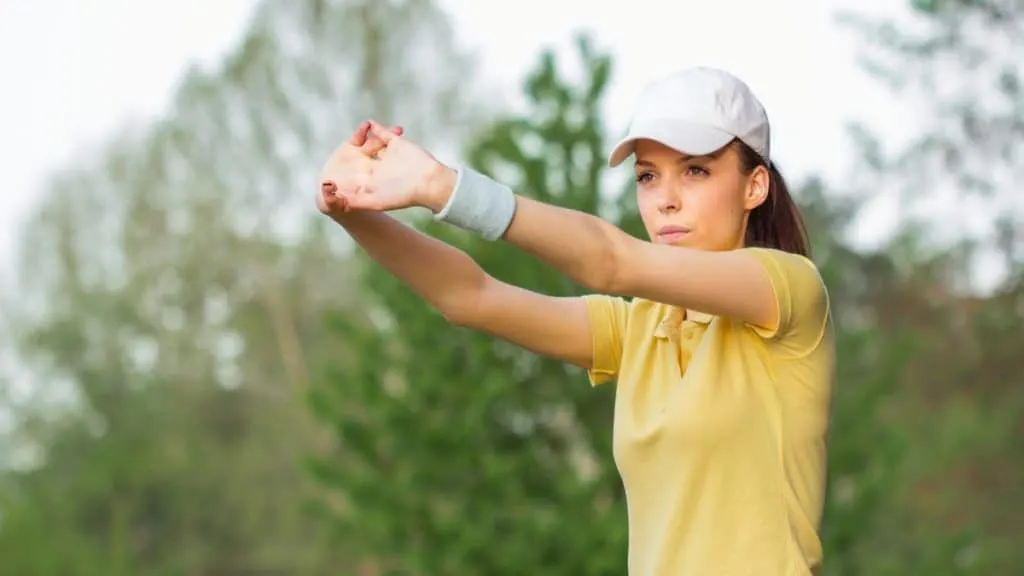
If your doctor suspects that your pain requires more simple rehabilitation methods, then they may refer you to a physiotherapist, who might then suggest performing various lower arm stretches to reduce any built-up muscular tightness.
Aim to do one stretch for the flexors and one for the extensors.
To stretch your flexors, which are located on the underside of your forearm, hold one arm out in front of you, elbow completely locked out. Then, raise your palm up as if you’re waving at someone. Now, apply a gentle stretch with your opposite hand by pulling your fingers towards you. Hold this position for 15-30 seconds.
To stretch your extensors, you perform the same motion but in reverse. Instead of raising your hand up and facing your palm away, you want to put your hand down and face your palm towards you. Then as before, gently pull your fingers towards you and hold the stretch for 15-30 seconds.
Resistance training
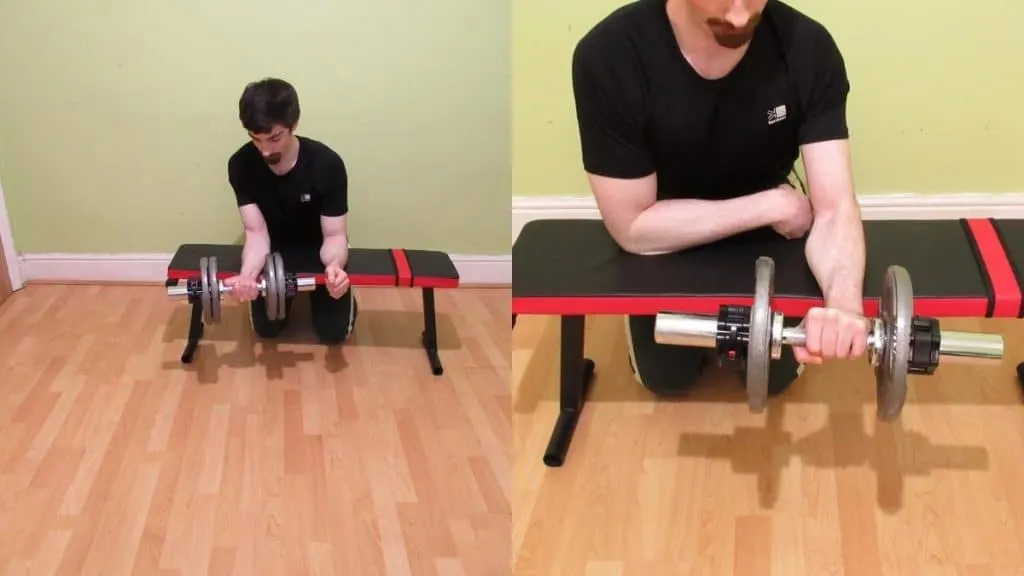
The stronger your forearms are, the more they can cope with stress and tension. So performing resistance training can naturally make you less susceptible to injuries because your muscles will be accustomed to handling physical pressure. [3]
For the forearms, you can do wrist curls over a weight bench. Hold a dumbbell over the edge of a bench and then lower the weight towards the floor until you feel a deep but comfortable forearm stretch. Bring the weight back up and contract your forearm. Stick to high reps (10-15) so that you don’t injure your wrists.
Technique alteration
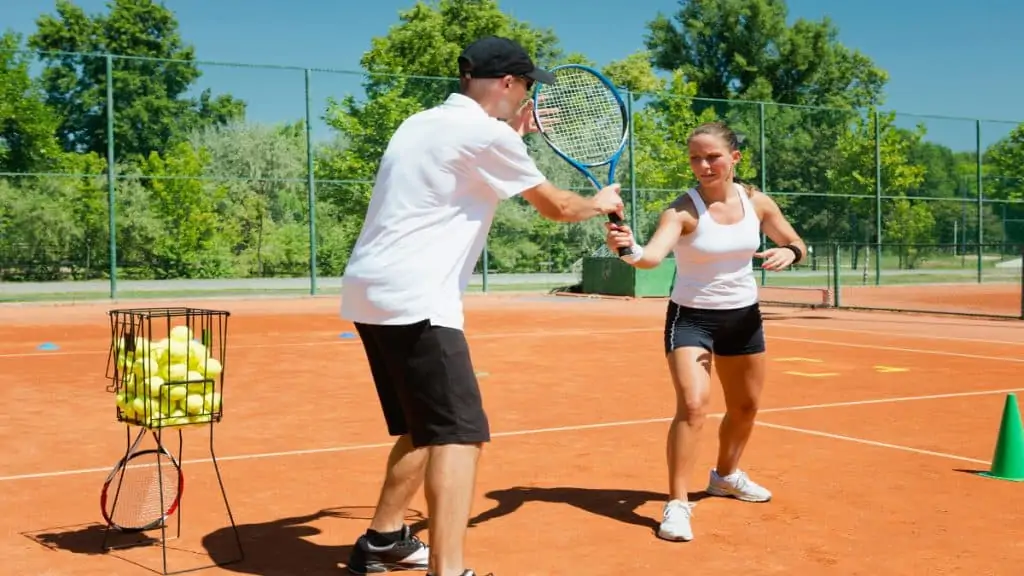
Just because one kind of swing hurts your forearm doesn’t mean that another swing can’t be forearm friendly.
As mentioned, get someone with more experience than you to observe your technique and identify where you could improve. Also, ask them if there’s a kind of swing that they recommend for your biomechanics and style of play.
Conclusion and preventative measures
There’s no single cause of tennis-related forearm pain. As mentioned, tennis elbow can often be felt in the forearm, despite its name, but there are other possible causes, such as using an excessively tight racket grip, that can also cause discomfort.
Self-treatment methods like stretching, RICE, and resistance training can help by making your lower arms more resistant to injury. But often, it’s best to talk to your doctor to rule out something more serious if the pain doesn’t subside.
References
- Buchanan, B. K., & Varacallo, M. (n.d.). Tennis Elbow. https://www.ncbi.nlm.nih.gov/books/NBK431092/
- Chung, K. C., & Lark, M. E. (2017). Upper Extremity Injuries in Tennis Players: Diagnosis, Treatment, and Management. Hand Clinics, 33(1), 175–186. https://www.ncbi.nlm.nih.gov/pmc/articles/PMC5125509/
- Reid, M., & Schneiker, K. (2008). Strength and conditioning in tennis: Current research and practice. Journal of Science and Medicine in Sport, 11(3), 248–256. https://doi.org/10.1016/j.jsams.2007.05.002

